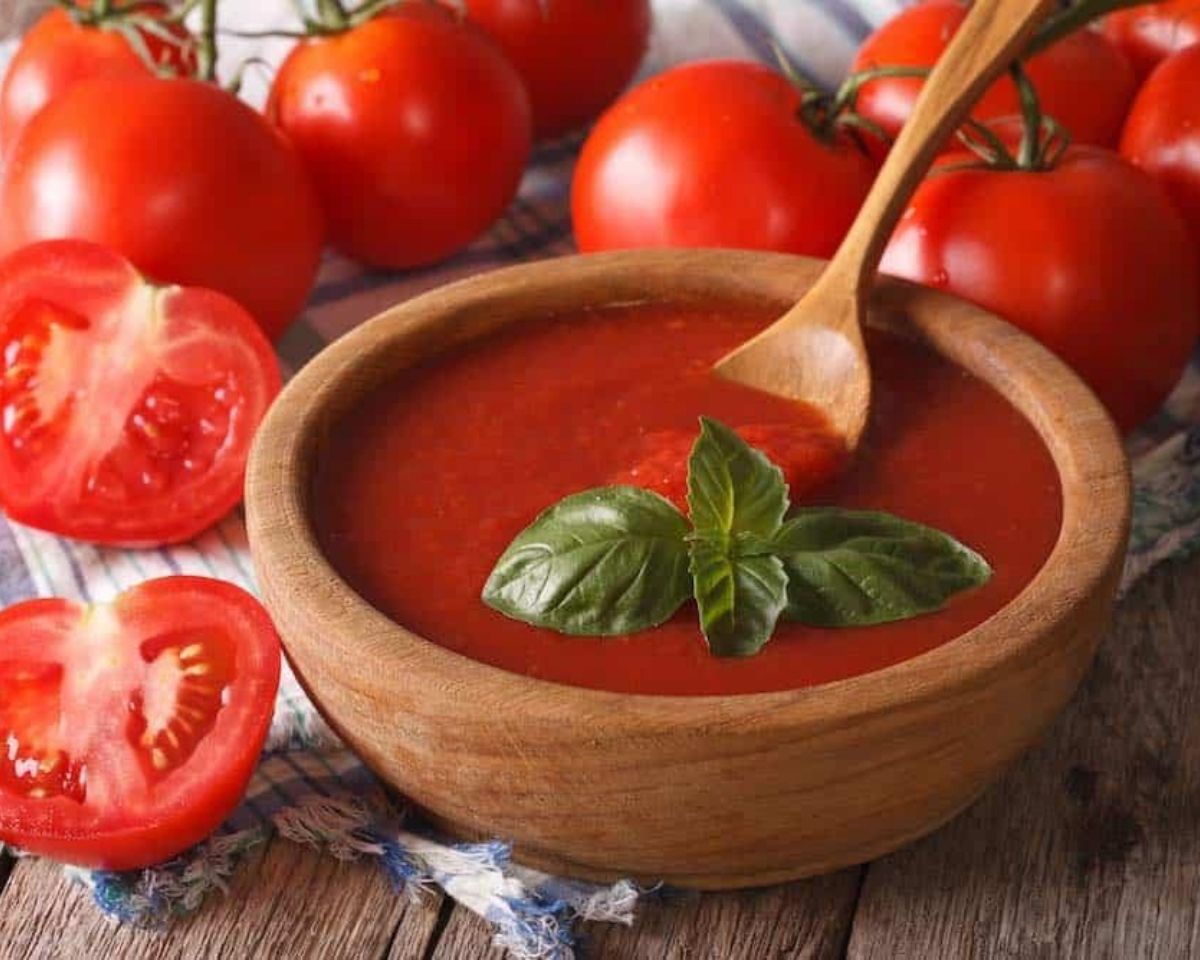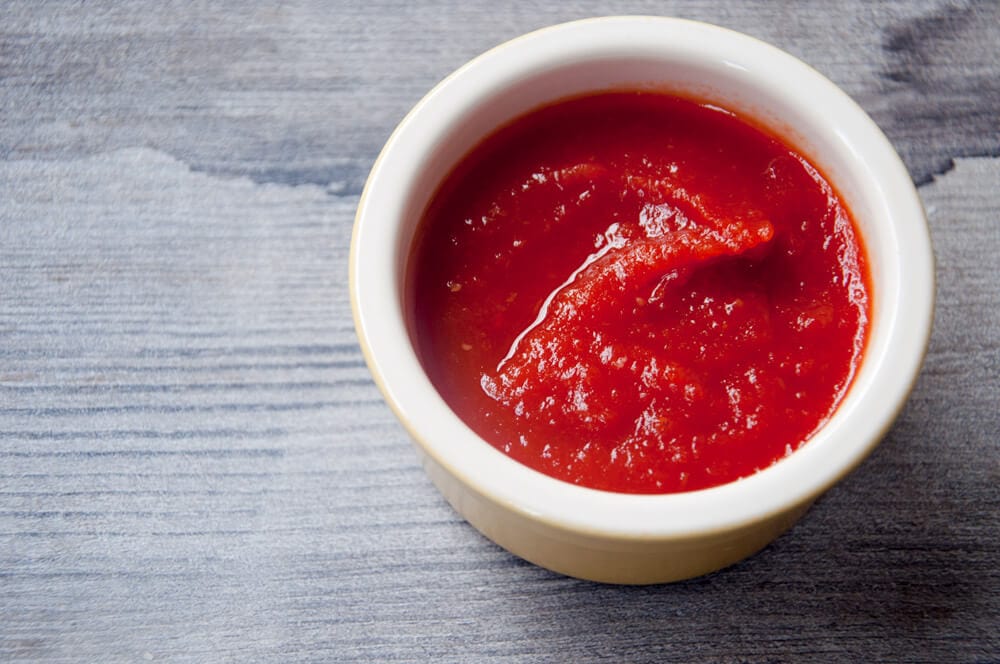Prepare to embark on a culinary adventure as we delve into the art of crafting the beloved condiment, tomato ketchup. From the tantalizing aroma to the vibrant crimson hue, this versatile sauce has captured the hearts of food enthusiasts worldwide.
Join us as we explore the secrets behind its creation, unravel its variations, and discover its nutritional nuances. Let’s gather our ingredients, don our aprons, and embark on a journey to elevate your culinary repertoire.
In this comprehensive guide, we will provide you with a step-by-step roadmap for creating a delectable tomato ketchup that will leave a lasting impression on your taste buds. We’ll delve into the essential ingredients and equipment, empowering you with the knowledge to customize and perfect your recipe.
So, whether you’re a seasoned chef or a culinary novice, get ready to master the art of homemade tomato ketchup.
Ingredients

Tomato ketchup is a staple condiment made from ripe tomatoes, sugar, vinegar, and spices. Here’s a breakdown of the key ingredients and their roles:
- Tomatoes: Provide the base flavor and texture of the ketchup. Use ripe, juicy tomatoes for the best results.
- Sugar: Sweetens the ketchup and balances the acidity of the tomatoes and vinegar.
- Vinegar: Adds a tangy flavor and helps preserve the ketchup.
- Spices: Enhance the flavor of the ketchup. Common spices include onion powder, garlic powder, paprika, and cayenne pepper.
Variations and Substitutions
You can customize your tomato ketchup recipe by experimenting with different variations and substitutions:
- Tomatoes: You can use fresh, canned, or tomato paste. If using canned tomatoes, choose high-quality, whole tomatoes with no added salt or citric acid.
- Sugar: You can substitute sugar with honey, maple syrup, or agave nectar for a healthier option.
- Vinegar: You can use white vinegar, apple cider vinegar, or rice vinegar. Apple cider vinegar will give the ketchup a slightly sweeter flavor.
- Spices: You can adjust the spices to your taste. For a spicier ketchup, add more cayenne pepper. For a more savory ketchup, add more onion powder and garlic powder.
Equipment
Preparing delectable tomato ketchup requires an assortment of essential tools, each serving a specific purpose in the culinary process. Understanding their functions and employing them effectively is paramount for achieving optimal results.
Saucepan or Dutch Oven
- A sturdy saucepan or Dutch oven with a heavy bottom is ideal for cooking the tomato mixture. The heavy base ensures even heat distribution, preventing scorching and promoting consistent cooking.
- Choose a vessel with a capacity large enough to accommodate the quantity of tomatoes being used, allowing for ample space for stirring and preventing spills.
Immersion Blender
- An immersion blender is a versatile tool for pureeing the cooked tomatoes into a smooth consistency. Its handheld design allows for precise control over the blending process.
- Ensure the immersion blender is fully submerged in the tomato mixture to avoid splashing and ensure thorough blending.
Strainer or Food Mill
- A fine-mesh strainer or food mill is used to remove any remaining seeds or skin from the pureed tomato mixture, resulting in a silky-smooth ketchup.
- Line the strainer with cheesecloth for even finer straining, removing any small particles that could affect the texture of the ketchup.
Measuring Cups and Spoons
- Accurate measurement of ingredients is crucial for achieving the desired flavor and consistency of the ketchup.
- Use standard measuring cups and spoons to ensure precise proportions and avoid over- or under-seasoning.
Thermometer
- A thermometer is essential for monitoring the temperature of the ketchup during cooking. Maintaining the correct temperature ensures proper thickening and prevents burning.
- Insert the thermometer into the center of the ketchup mixture and stir constantly to obtain an accurate reading.
Methods

Creating tomato ketchup involves a series of steps that require careful attention to achieve the desired consistency and flavor. This section provides a comprehensive guide to the methods employed in the preparation of this condiment.
The process begins with the selection of ripe, high-quality tomatoes. These tomatoes are then washed thoroughly to remove any impurities. Subsequently, the tomatoes are cut into small pieces to facilitate the extraction of their juice.
Cooking the Tomato Puree
The cut tomatoes are combined with sugar, vinegar, and a blend of spices in a large pot or saucepan. This mixture is brought to a boil and then simmered for an extended period, allowing the flavors to meld and the tomatoes to soften.
During this simmering process, the mixture is stirred frequently to prevent scorching and ensure even cooking.
Straining and Pureeing
Once the tomatoes have softened and the mixture has thickened, it is passed through a fine-mesh sieve or food mill to remove any remaining skins or seeds. The resulting puree is then returned to the pot and brought back to a simmer.
Adjusting Consistency and Flavor
The consistency of the ketchup can be adjusted by adding more sugar or vinegar as needed. Additionally, the flavor can be customized by adding additional spices or herbs to suit personal preferences. Once the desired consistency and flavor have been achieved, the ketchup is removed from the heat and allowed to cool slightly before being bottled or stored.
Variations
Tomato ketchup is a versatile condiment that can be enjoyed in various forms. Here are a few popular variations:
Each variation offers a unique blend of flavors and textures, catering to different preferences.
Spicy Ketchup
Spicy ketchup adds a kick of heat to your favorite dishes. It is made by incorporating chili peppers or hot sauce into the traditional ketchup recipe.
The level of spiciness can be adjusted based on the type and quantity of peppers used. Cayenne pepper, jalapeños, or habaneros are commonly used to create spicy ketchup.
Sweet Ketchup
Sweet ketchup is a sweeter alternative to traditional ketchup, perfect for those who prefer a milder flavor.
Additional sugar, honey, or molasses is added to the ketchup base, resulting in a sweeter taste. Sweet ketchup pairs well with dishes like chicken nuggets, fries, and burgers.
Smoky Ketchup
Smoky ketchup imparts a rich, smoky flavor to your meals. It is made by adding smoked paprika, liquid smoke, or roasted tomatoes to the ketchup mixture.
The smoky flavor complements grilled meats, sandwiches, and dips. It adds a depth of flavor that elevates the taste of various dishes.
Garlic Ketchup
Garlic ketchup adds a savory, garlicky twist to your favorite condiments. It is made by incorporating minced garlic or garlic powder into the ketchup base.
Garlic ketchup pairs well with dishes like pizza, pasta, and sandwiches. It adds a subtle garlic flavor that enhances the overall taste experience.
Presentation
To enhance the visual appeal of tomato ketchup, consider serving it in a stylish condiment dish or ramekin. You can also drizzle it over dishes in a decorative manner, creating swirls or patterns for an elegant touch.
Ketchup pairs well with a variety of dishes, including hamburgers, hot dogs, french fries, onion rings, and grilled meats. It can also be used as a dipping sauce for appetizers such as mozzarella sticks, chicken tenders, and spring rolls.
Garnishing and Styling
For special occasions, you can elevate the presentation of ketchup by garnishing it with fresh herbs, such as basil, parsley, or chives. A sprinkle of grated Parmesan cheese or crumbled bacon can also add a touch of flavor and visual interest.
Storage
Proper storage of tomato ketchup is essential to maintain its quality and extend its shelf life. Here are some guidelines for storing both homemade and store-bought ketchup:
Homemade Ketchup
- After opening, refrigerate the ketchup in an airtight container for up to 3 weeks.
- If you want to store it for longer, freeze the ketchup in ice cube trays and transfer the frozen cubes to a freezer-safe bag. They can be stored for up to 3 months.
Store-Bought Ketchup
- Store unopened ketchup in a cool, dark place like a pantry or cupboard. It can last for up to a year.
- Once opened, refrigerate the ketchup in an airtight container for up to 6 months.
Tips for Extending Shelf Life
- Always use a clean spoon to scoop out ketchup to avoid introducing bacteria.
- Store the ketchup in a cool, dark place to prevent spoilage.
- Discard any ketchup that has an off odor or taste, or if it has developed mold.
Nutritional Information
A standard serving of tomato ketchup (20 grams) provides approximately:
- Calories: 18
- Fat: 0 grams
- Carbohydrates: 4 grams (including 3 grams of sugar)
- Protein: 0 grams
- Sodium: 160 milligrams
Ketchup is a good source of lycopene, an antioxidant linked to reduced risk of heart disease and some types of cancer. However, it is also high in sugar and sodium, which can be detrimental to health when consumed in excess.
Healthier Ketchup Options
For a healthier ketchup option, consider:
- Making your own ketchup using fresh tomatoes and reducing the amount of sugar and salt.
- Choosing a ketchup brand that is low in sugar and sodium.
- Using ketchup sparingly as a condiment, rather than as a main ingredient.
Final Conclusion
As we conclude our exploration of the tomato ketchup recipe, we hope you’ve gained a newfound appreciation for this culinary staple. Remember, the joy of cooking lies in experimenting and tailoring recipes to your unique palate. Embrace the versatility of tomato ketchup and let your creativity shine through.
Whether you prefer a classic flavor or a bold twist, the possibilities are endless. So, gather your ingredients, ignite your culinary passion, and embark on a journey to create your signature tomato ketchup that will tantalize your taste buds and leave a lasting impression on all who savor it.
FAQ Corner
Can I substitute honey for sugar in the recipe?
Yes, you can substitute honey for sugar in a 1:1 ratio. Honey adds a subtle sweetness and depth of flavor to the ketchup.
How can I thicken the ketchup if it’s too thin?
To thicken the ketchup, simmer it over low heat for a longer period of time, stirring occasionally. You can also add a cornstarch slurry (equal parts cornstarch and water) to the ketchup while it’s simmering.
What is the best way to store homemade ketchup?
Store homemade ketchup in an airtight container in the refrigerator for up to 2 weeks. For longer storage, freeze the ketchup in airtight containers for up to 6 months.
